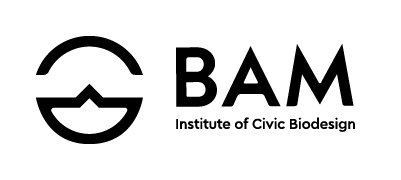Resilient Sioux Falls
Mission Statement
To establish neighborhood hubs, neighborhood congresses, community organizations, and community development corporations (CDCs) through dynamic citizen engagement.
Project Description
1,500-5000 residents make up a typical neighborhood. By those standards, Sioux Falls should have as many as 130 defined neighborhoods. However, as of 2020, the city has only 11 active neighborhood organizations and only one community development corporation (All Saints). Without an established neighborhood identity, residents are less likely to connect with the place they live and to engage in sustainable behaviors that help create a thriving neighborhood.
Resilient Sioux Falls is an integrated sustainability program focusing on neighborhood identity development by fostering discussion, collaboration, and action through a series of neighborhood community forums and a gamified badge system tied to proven sustainability strategies. It also acts as a bridge between individual citizens looking to catalyze change and city/institutional programs that can help facilitate that change.

Resilient Sioux Falls Process (Per Neighborhood)
Phase 1: Promote the Game to the “Players” (Lead-Up)
Duration: 1 to 2 Months
Promote event series using USPS Routes as starting point
Identify Neighborhood Liaisons/Speakers
Door-to-Door Campaign along with partnerships with businesses and community organizations
Hang Posters at community spaces
Phase 2: Identify the Neighborhoods (First Meeting)
3 hour Event held in a neighborhood hub
Neighbors will answer questions that shed light on the collective identity of a neighborhood
Mapping of boundaries, resources, assets, and challenges
Phase 3: Present the Data and Introduce the Badges (Second Meeting)
3 Hour Event held in a neighborhood hub
Data collected up to this point in the
Badges are connected to proven strategies and actions that contribute to a neighborhood's thrivability. There are hundreds of badges to consider and the list will continue to grow.
Badges range from actions taken by an individual to the entire neighborhood.
Phase 4: Start to Play the Game (Third Meeting)
3 Hour Event held in a neighborhood hub
Data collected will be reported back to the neighborhood and the city.
Strategies put forth by the neighborhood will be integrated with the existing list.
Neighbors will begin acquiring badges as individuals, households, and neighborhoods
Phase 5: Assess the Challenges and Opportunities (Moving Forward)
Neighborhood Speakers will be identified and act as civic connectors, collaborators, and translators.
Community Hubs in each neighborhood will be established. These spaces would ideally be places that people already gather.
Pathways to neighborhood based projects, programs, and organizations will take shape.
The BAM CityLab: Whittier at the Union Gospel Mission will act as the template for how these spaces function.
Evaluation of Success
A pre and post wellness survey comparing data
Stakeholder survey
Number of neighbor congresses, associations, cdc’s and associated businesses and non-profits established
Event Participation
Statement of Impact
Resilient Sioux Falls will facilitate community wellness through the establishment of as many as 132 neighborhood congresses feeding into as many as 17 neighborhood wards that will provide direct and dynamic civic engagement between council members and their constituents. In partnership with the BAM Institute, Resilient Sioux Falls will aid in the identification of and investment in community spaces that bridge citizens with municipal resources, maximizing the effectiveness of community-based projects.
Anticipated Outcomes
Increased sense of identity for individual neighborhoods
Detailed qualitative and quantitative wellness data
Identification of unique values and priorities of each neighborhood
Open-source data made available to private and public entities for more customized initiatives and business opportunities
Stakeholders can make more data-driven decisions
Sustainable community improvement facilitated by newly created neighborhood associations and CDC’s
Stronger Civic Engagement
Beautification of neighborhoods
Increased entrepreneurial activities
Projects designed and deployed by community members
Increased civic pride
Increased quality of life
Detailed identification of unique assets, challenges, and opportunities present in neighborhoods
Scalable initiatives are more easily identified, designed, and deployed
What are they going to get?
A Physical “Newspaper” with a Neighborhood Wellness Assessment, a Neighborhood Mapping Activity, and Resilient Sioux Falls Graphic Poster
3 Facilitated Events per neighborhood
Sustainability Badge System and Benchmarking Process
Neighborhood Identity Marketing Campaign
Qualitative and Quantitative GIS Data
Platform and Framework for Continued Neighborhood Catalyzing
Resources Available
Citylab Office Space
Existing Neighborhood Associations
Network of Sioux Falls Community Groups
Resources Needed
$30,000 to prototype the first 3 neighborhoods
City approval
2 additional staff
Contact jordan@civicbiodesign.org for more information.
